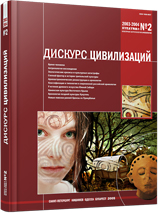Курган эпохи энеолита – ранней бронзы у с. Ревова Одесской области и его археоастрономическая интерпретация
Eneolithic-Early Bronze Age Barrow at the Village of Revova (Odessa County) and its Archaeoastronomical Interpretation
Author(s): Tamila M. Potemkina, Svetlana V. IvanovaSubject(s): History, Archaeology, Cultural history, History of ideas, Ancient World
Published by: Издательский дом Stratum, Университет «Высшая антропологическая школа»
Summary/Abstract: The article substantiates theses supporting the cultic function of the barrow Revova 3, which bears obvious cosmogonical symbols.The beginning of the construction of the barrow dates back to the Eneolithic. The main burial (19) followed a special ceremony: the body was dismembered, its members being joined in vertical anatomic order thereafter and fixed in sitting position in the burial. There were no finds in the burial. The first mound of light loam (11-12 m in diameter, 1.0-0.7 m high) was raised above it. On its top, a circle of stones (9.5-10.5 m in diameter, about 1 m wide) of different size was laid around the mound’s border. The second Eneolithic (plundered) burial was made in the center of the mound, west of the main burial. It was covered by stone blocks and surrounded by a stone ring. The entire complex of the early barrow is typical of the Usatovo culture.The archaeo-astronomic data for the latitude of the barrow (47.3°) testify that the details of the stone circle with its extensions, as well as breaches-passages in the ditch fix the most important solar and lunar azimuths. The orientation by head, as well as the orientation of the funeral structures, sacrificial pits and fires are linked to these directions, mostly the solar ones. It suggests that the stone structures were used as specific reference points in funeral and calendar rites of the population that built the barrow. Building of the early construction complex was finalized by some additions to the barrow’s second light mound, which later housed four pit (Yamnaya) burials (4, 7, 15, 16) made in accordance with the spatial-temporal ideas reflected in the earlier structures of the barrow.
Journal: Stratum plus. Археология и культурная антропология
- Issue Year: 2004
- Issue No: 2
- Page Range: 145-162
- Page Count: 18
- Language: Russian
- Content File-PDF

